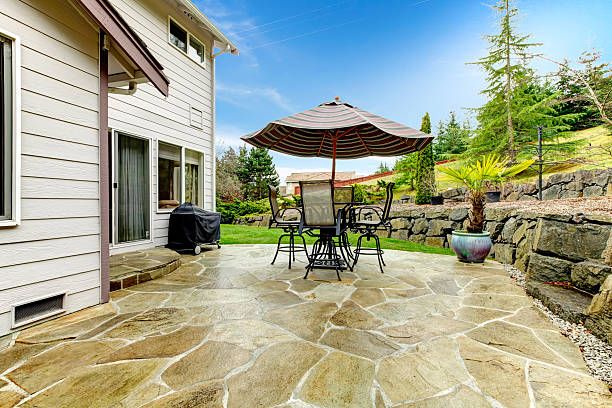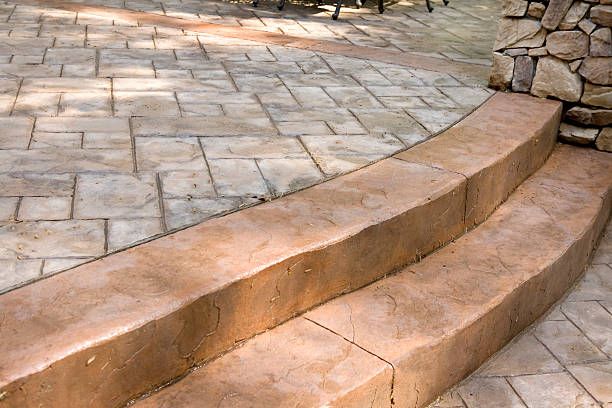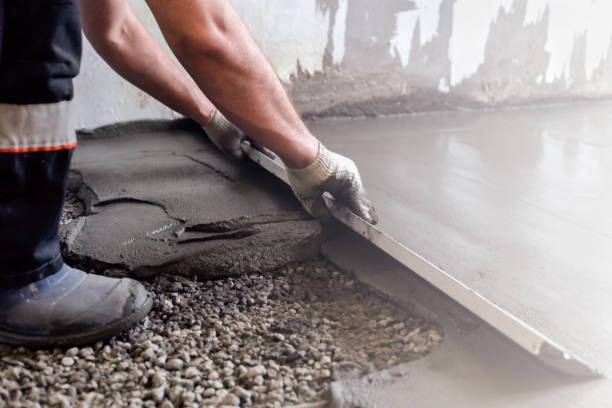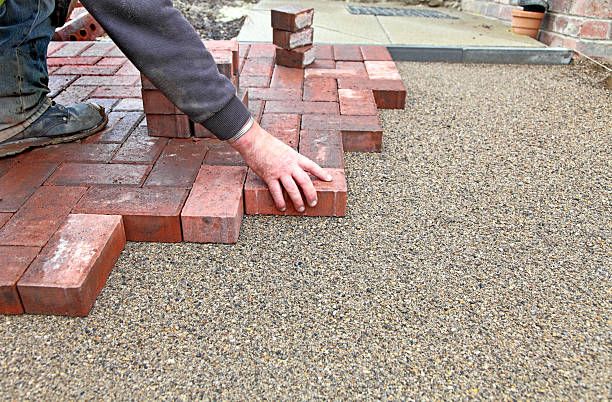How to Create a Concrete Patio: Masonry Construction Pros
Looking to add a patio to your backyard? A concrete patio is a great option that can be tailored to your needs and style. In this blog post, we will discuss the steps involved in creating a concrete patio, from excavation to finishing touches. We will also highlight some of the benefits of having a concrete patio, such as durability and low maintenance. If you're ready to start planning your new patio, read on for helpful tips from the experts at Masonry Construction Pros!
What is a concrete patio?

A concrete patio is a paved area that is usually made from concrete, a type of construction material. Concrete is made from a mixture of cement, water, and fine aggregates, such as sand or gravel. The proportions of these ingredients vary depending on the desired strength and durability of the finished product. Once the concrete is mixed, it is poured into place and allowed to harden. After the concrete has cured, it can be finished with a variety of treatments, such as staining or sealing. Concrete patios are durable and low-maintenance, making them a popular choice for outdoor spaces. Additionally, they can be customized to fit any backyard size or layout.
How to choose the concrete patio type?
When choosing a concrete patio, there are many factors to consider. The first is the size and shape of your patio. If you have a large backyard, you may want to consider a spacious rectangular patio. However, if your backyard is smaller, you may want to go for a more intimate round or square patio. Another important factor to consider is the type of concrete you want to use. There are many types of concrete, each with its own benefits and drawbacks. For example, stamped concrete is a popular choice for patios because it can be made to look like stone or brick. However, it is also one of the more expensive types of concrete. If you're on a budget, you may want to consider plain concrete or concrete pavers. Each type of concrete has its own unique look, so be sure to browse through all the options before making your final decision.
Benefits of concrete patio
Patios are a great addition to any home. They provide a place to relax, entertain, and enjoy the outdoors. Best of all, patios can be made from a variety of materials, including concrete. Concrete patios offer a number of advantages over other types of patios. For one, they are extremely durable and can withstand heavy traffic. They are also easy to maintain and can be customized with a variety of colors, textures, and patterns. In addition, concrete patio diy is relatively inexpensive and can be installed by do-it-yourselfers. As a result, concrete patios are an excellent choice for anyone looking to add a patio to their home.
Sealing and protecting your concrete slab
If you have a concrete patio, chances are you want it to last for many years to come. Here are a few tips on how to seal and protect your patio so that it will look great for years to come. First, clean the concrete slab well with a power washer or hose attachment. Be sure to remove any dirt, grime, or stains that may be present. Once the concrete is clean, allow it to dry completely before proceeding. Next, apply a layer of sealant with a roller or brush. Be sure to follow the manufacturer's instructions carefully. Finally, apply a layer of protective coating such as polyurethane or epoxy. This will help to prevent staining and fading. With just a little of care, your diy concrete patio will stay looking great for years.

How to build a Concrete Patio?
1. Choose the right spot for your patio
When you're ready to add a patio to your home, it's important to choose the right location. The best spot for your patio will be level and well-drained. If your yard is sloped, you'll want to choose a location that's level or only slightly sloped. This will make it easier to create a flat surface for your patio.
2. Prep the area by removing any grass or weeds
You need to prepare the area by removing any grass or weeds. This may seem like a daunting task, but with a little elbow grease, it can be easily accomplished. First, make sure to mark out the perimeter of the patio with stakes and string. Then, use a spade or shovel to dig up the grass and soil within the boundaries. Once you've removed all the vegetation, use a rake to level off the ground. Now you're ready to start working on your new patio!
3. Add a layer of gravel to create a base for the concrete
Adding a layer of gravel to create a base for the concrete is an essential step in creating a concrete patio. The gravel provides a stable foundation for the concrete and helps to prevent cracking. It is important to use clean, non-porous gravel that is free of debris. The gravel should be compacted before the concrete is added. Once the gravel is in place, the concrete can be mixed and poured. After the concrete has cured, it can be stained or sealed for protection. Adding a layer of gravel to create a base for the concrete is an essential step in creating a beautiful and durable patio.
4. Pour in the concrete and use a trowel to smooth it out
Pouring concrete mix is the next step in creating your patio in a concrete mixer. Be sure to follow the manufacturer's instructions carefully. Once the concrete is in place, use a trowel to smooth the excess concrete out. You may also want to use a float to create a more even surface after you have poured concrete patio.
5. Create designs in the concrete cure using a stamp or other objects
After the concrete slabs has cured, you can create designs in the concrete using a stamp or other concrete finishing tools. This is a great way to add personality to your patio. If you're not sure how to get started, there are many books and websites that offer step-by-step instructions for concrete pouring and other techniques. With a little creativity, you can easily transform your paver patio into a work of art.
6. Let the concrete dry completely before using your patio
Once the concrete has dried completely, you can start using your patio. Be sure to seal or stain the concrete to protect it from weathering. With just a bit of care, your patio will last for many years.
Thanks for reading! We hope this guide was helpful. If you have any questions, please feel free to contact us. We're always happy to help.
You might also like




